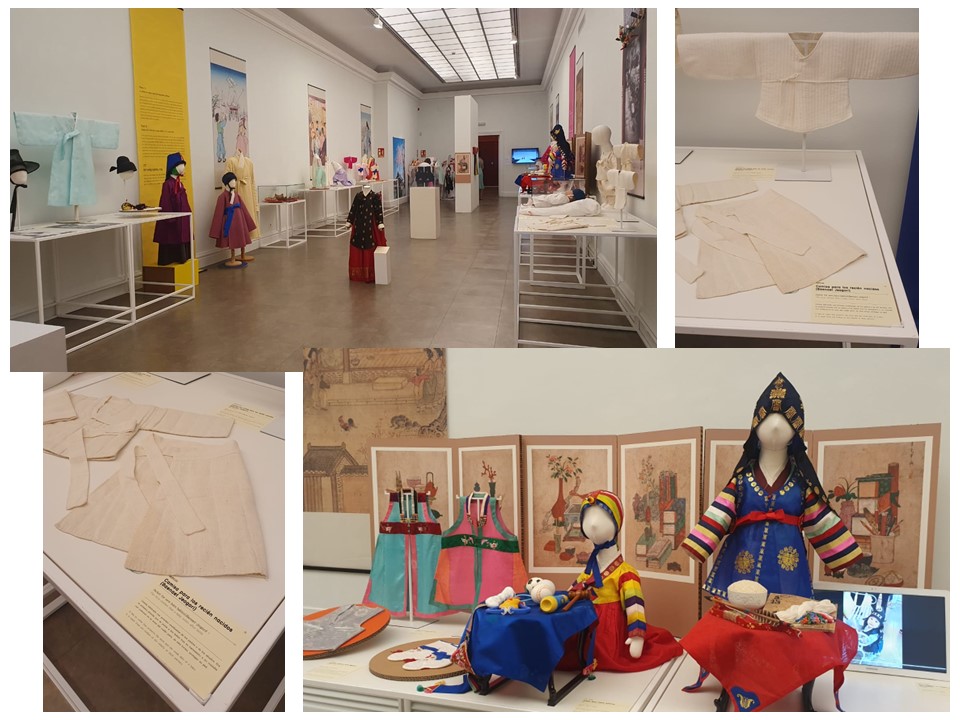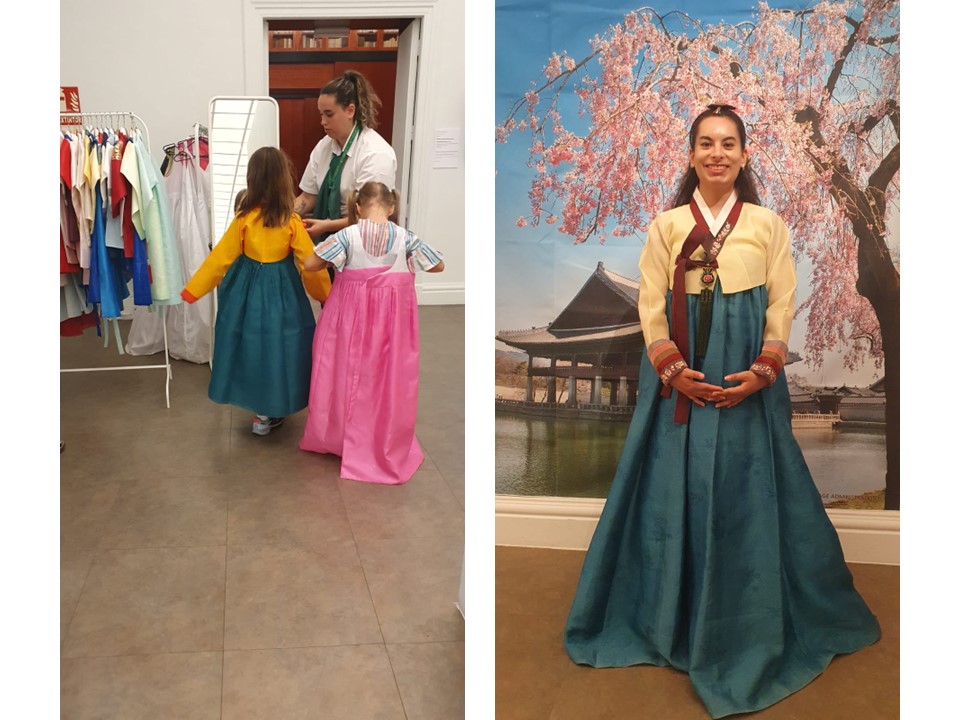- 한국어
- English
- 日本語
- 中文
- العربية
- Español
- Français
- Deutsch
- Pусский
- Tiếng Việt
- Indonesian
By Honorary Reporter Carla Cienfuegos Mao from Mexico
Photos = Carla Cienfuegos Mao
San Fernando Fine Art Royal Academy in Madrid, Spain, from April 27 to July 25 hosts the exhibition "Love Made with All Parents' Heart: Traditional Children's Clothing" sponsored by the Korean Ministry of Culture, Sports and Tourism. I visited the exhibition on July 12.
Seok Juseon Memorial Museum of Dankook University in Yongin, Gyeonggi-do Province, provided a selection of children's Hanbok reflecting folk beliefs and parents' wishes for their children.

These are traditional costumes for newborns and the first birthday.
The first part of the exhibition presented costumes for children under a year old. Baenaetjeogori, a short shirt for newborns tied with goreum (ribbon), traditionally conveyed hope for the child's survival during this critical period of early life.
Koreans traditionally celebrate a baby's 100th birthday, or baekil. Since baek means both "100" and "white," a child was dressed in white cloth quilted with 100 fabric pieces. The attire for the first birthday is dolbok (first birthday outfit), which is colorfully embroidered with the time-honored shipjangsaengdo (10 symbols of longevity).

The motif of obangsaek, or the traditional Korean spectrum of five colors, is shown in children's Hanbok.
At ages 2-6, children were mainly dressed in brightly-colored jeogori (top garment) believed to ward off evil spirits and pungcha baji (open-crotch pants) for potty training. The colors of jeogori were based on obangsaek, the traditional five-color spectrum symbolizing the cardinal points, elements and seasons under the theory of yin-yang.
Hanbok for children from ages 7-15 was the most impressive. Their costumes turned into adult versions as kids from elite families in the Joseon Dynasty began to prepare for adulthood. At age 15, boys tied their hair into a topknot and girls use a binyeo (traditional ornamental hairpin) to wrap their hair. I was surprised that children at such a young age were trained to become functional members of society.

I tried on a Hanbok after watching the exhibition.
I also tried on Hanbok after the exhibition, and this interactive experience was both educational and enjoyable for visitors.
The exhibition left me with a deep impression on the family love the Korean tradition conveys, as well as a better understanding of the reason why Koreans value their traditional clothing and still dress in Hanbok for holidays and celebrations.
msjeon22@korea.kr
*This article is written by a Korea.net Honorary Reporter. Our group of Honorary Reporters are from all around the world, and they share with Korea.net their love and passion for all things.
Most popular
- Slew of festivals, events scheduled in downtown Seoul in May
- Actor Tom Cruise proves 'love for Korea' with 12th visit
- Netflix releases official trailer for final season of 'Squid Game'
- Jeju Island completes prep to host series of APEC meetings
- Korea Day celebrated at Osaka-Kansai World Expo in Japan
